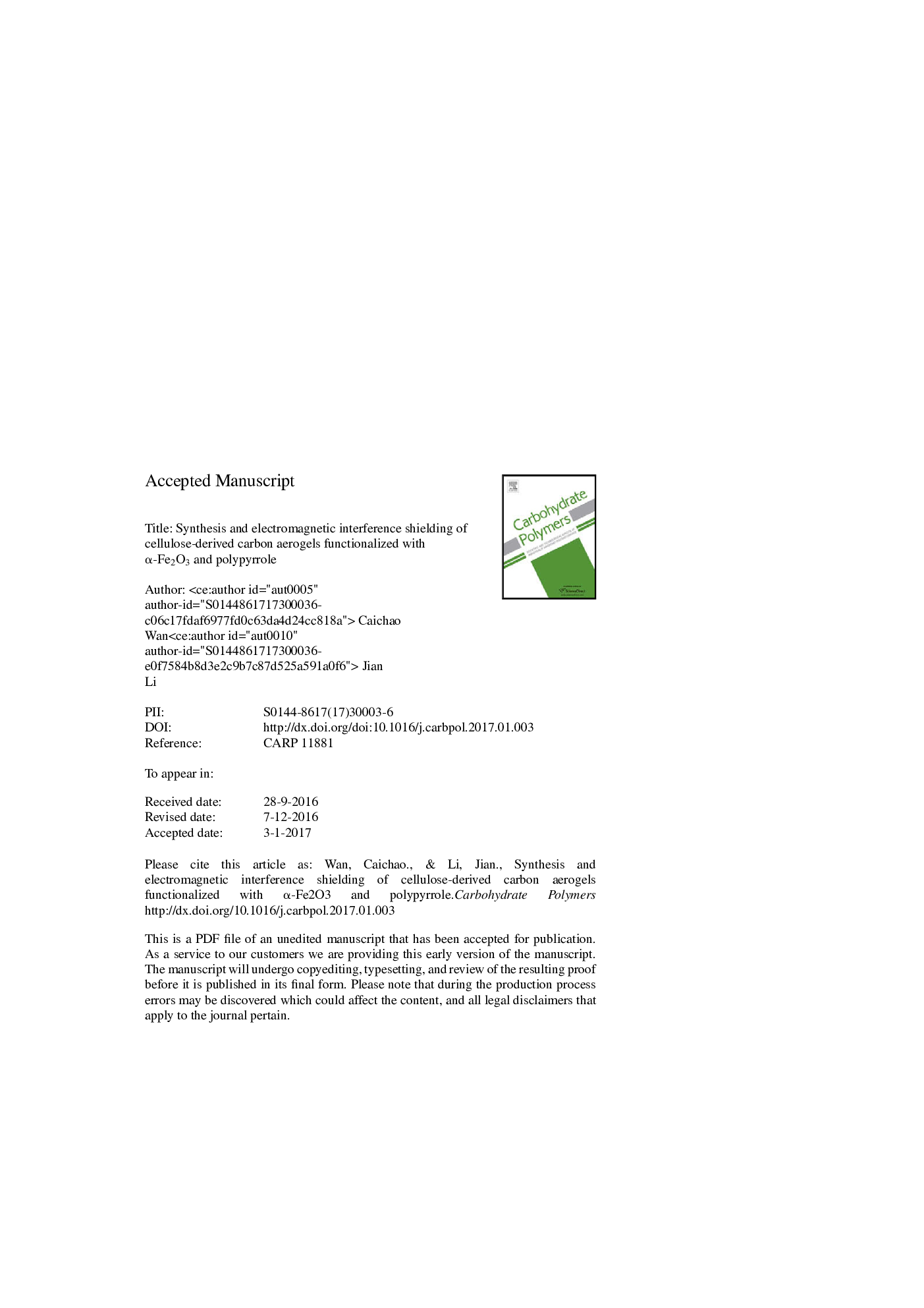| Article ID | Journal | Published Year | Pages | File Type |
|---|---|---|---|---|
| 5157738 | Carbohydrate Polymers | 2017 | 31 Pages |
Abstract
Eco-friendly cellulose-derived carbon aerogels (CDCA) were employed as porous substrate to integrate with α-Fe2O3 and polypyrrole (PPy) via pyrolysis and vapor-phase polymerization. The SEM and TEM observations present that the wrinkled PPy sheets and the α-Fe2O3 nanoparticles were well dispersed in CDCA. The strong interactions (such as hydrogen bonding) between the substrate and the nanomaterials were demonstrated by the FTIR and XPS analysis. When utilized as electromagnetic interference (EMI) shielding materials, the α-Fe2O3/PPy/CDCA (FPCA) composite has the highest total shielding effectiveness (SEtotal) of 39.4 dB, about 2.0, 2.9, and 1.3 times that of the acid-treated CDCA (19.3 dB), PPy (13.6 dB), and α-Fe2O3/CDCA (29.3 dB), respectively. Moreover, the shielding effectiveness due to absorption accounts for 78.2%-84.2% of SEtotal for FPCA, indicative of the absorption-dominant shielding mechanism contributing to alleviating secondary radiation. These features make the composite a useful alternative candidate for EMI shielding.
Related Topics
Physical Sciences and Engineering
Chemistry
Organic Chemistry
Authors
Caichao Wan, Jian Li,
